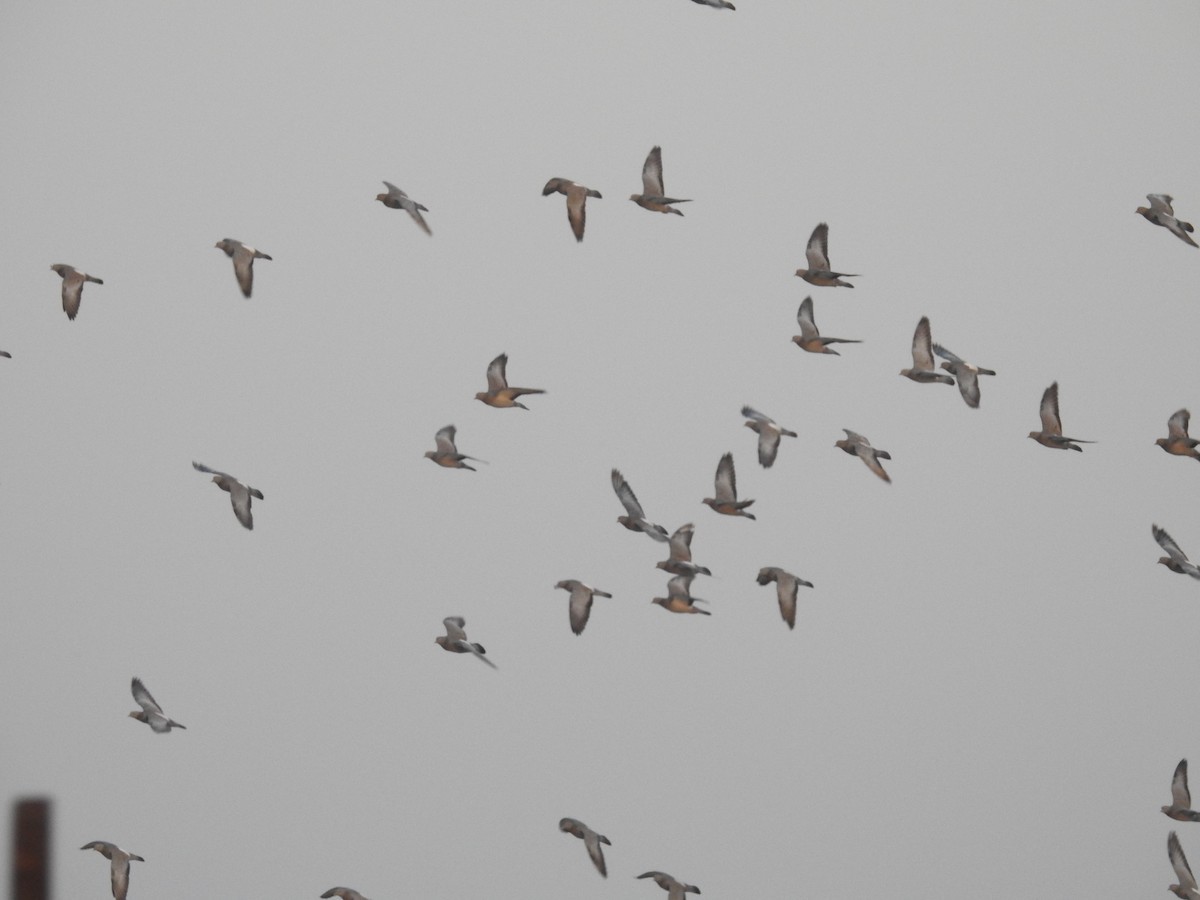Yellow-eyed Pigeon
A species of Old World Pigeons, Also known as Yellow-eyed Stock Dove Scientific name : Columba eversmanni Genus : Old World Pigeons
Yellow-eyed Pigeon, A species of Old World Pigeons
Also known as:
Yellow-eyed Stock Dove
Botanical name: Columba eversmanni
Genus: Old World Pigeons
Content
Description General Info
 Photo By Ashwin Viswanathan
Photo By Ashwin Viswanathan Description
The yellow-eyed pigeon is a medium-sized pigeon growing to a length of about 30 cm (12 in) and a weight of 183 to 234 g (6.5 to 8.3 oz). It is mostly grey, with a slightly brownish tinge to the upper parts and a pinkish-purple sheen on the crown, throat and breast. The wing has a black bar and the tail has a diffuse dark band. The lower back, rump and underside of the wings are white or pale grey. There is bare area of yellowish skin around the eye, the iris is yellow, the beak is yellowish and the feet pink. This pigeon could be confused with the rock dove (C. livia), but that species has more prominent wing bars and tail band. The hill pigeon (C. rupestris) is also similar, but it has a white subterminal band on the tail above the black terminal band. The yellow-eyed pigeon is generally a silent bird, but during the breeding season it sometimes emits a faint "oo-oo-oo". 
Size
31 cm
Nest Placement
Cliff
Feeding Habits
Yellow-eyed Pigeon forages primarily on the ground for seeds, maize, and other cereals, often found in agricultural stubble. It also adapts to consume ripening mulberries directly from trees.
Habitat
The habitat of yellow-eyed Pigeon typically encompasses steppe regions, adjacent lowlands, and desert fringes, particularly in areas of lower middle latitudes. These birds are often found in the lush valleys of mountains near water sources. During winter, they frequent agricultural lands situated on floodplains, suggesting a preference for environments that provide both nourishment and water access.
Dite type
Granivorous
General Info
Feeding Habits
Bird food type
Distribution Area
The yellow-eyed pigeon breeds in southern Kazakhstan, Uzbekistan, Turkmenistan, Tajikistan, Kyrgyzstan, Afghanistan, north-east Iran and the extreme north-west part of China. It migrates southwards in the autumn to overwinter in Pakistan, north-western India and northwestern China, in the provinces of Xinjiang and Gansu. In its breeding area it inhabits steppes and other lowland habitats including semi-arid and arid areas. In its winter quarters it is found in agricultural areas, orchards and open countryside with scattered trees. It is particularly attracted to areas with mulberry trees. 
Species Status
At one time abundant, the population of the yellow-eyed pigeon has declined considerably over the years. The chief threat this bird faces is hunting, in both its breeding range and its winter quarters; the present population trend is unknown but the decline may be continuing and the International Union for Conservation of Nature has assessed the bird's conservation status as being "vulnerable". 

 Photo By Ashwin Viswanathan
Photo By Ashwin Viswanathan Scientific Classification
Phylum
Chordates Class
Birds Order
Pigeons and doves Family
Dove Genus
Old World Pigeons Species
Yellow-eyed Pigeon